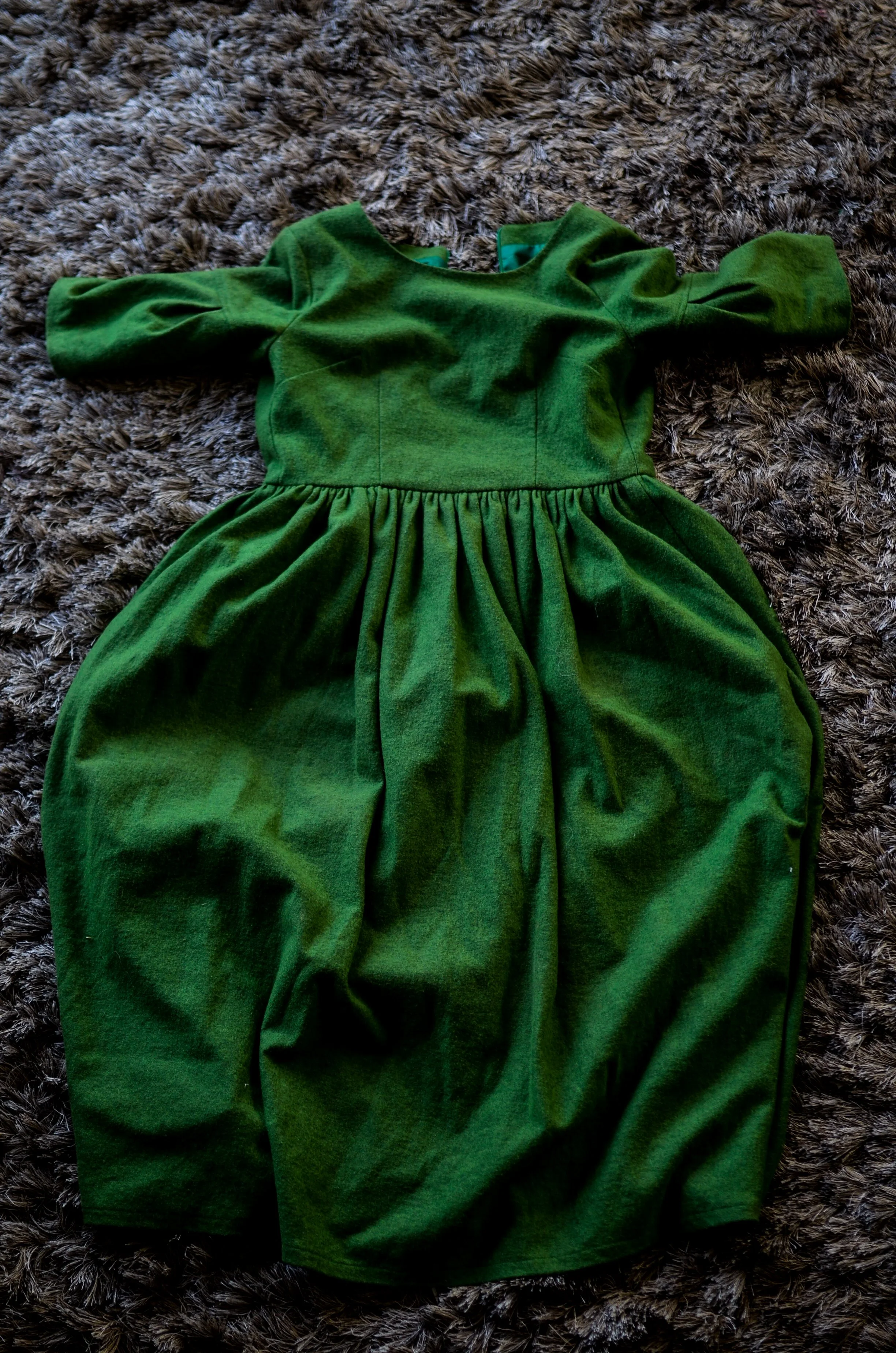Done with Disposable Fashion
I don't really know how many days we've been in quarantine. Here in Washington, that still means a lot of regulation. What this time has provided me (besides a beautiful excuse to have a free calendar) is plenty of time to reconsider what was once normal. (Surely, I'm not alone in this). What has surprised me about this additional-time-spent-thinking is where, ultimately, I landed.
To give you a hint, I spent twenty minutes last night watching a YouTube video on sewing historical dresses.
While it may be a little while yet before I throw on Victorian garb, I still have found myself longing for the non-disposable in many forms. Because trips to town have been less frequent (and as much as I'm thankful for it, the thought of constantly buying things online and having them shipped here is not my favorite idea either), I landed somewhere odd.
Somewhere between Tasha Tudor and Clair Fraser.
Somewhere where I'm drawn to quality. Somewhere where things aren't thrown away after a single use. Somewhere where local farmers, community, and fellowship have intense value. Somewhere where items are valued and cherished and cared for from generation to generation. Somewhere were the clothes on my body cast a vote for the right things and play to my feminine nature.
So here's where I am. I'm DONE with the disposable.
Especially clothing.
Have we got this area of our culture totally wrong?
This clothing/fashion exploration is currently a battleground in my brain. With uncertainty on the horizon, and much (if not all) of it out of my control, I have spent the last few months digging deep into the farm and vegetable gardens. By eliminating my social calendar, and spending my days toiling in the soil, I found myself being drawn towards old-world-dress. For the farm, it's extremely practical and comfortable.
My mind skips around the idea of natural fabrics in between planting my radishes and endive. Staring at my hair sheep, I contemplated bringing in some fiber sheep to the farm as well (what would Stuart say!). Wool - what an incredibly rich natural resource right at our fingertips. How hard could it be to sheer a sheep? Is there a YouTube video on that? I bet I could learn. In the midst of all of this, I restocked my yarn supply (teaching Georgia to crochet was part of our quarantine activity) and fell back in love with naturally-dyed fibers from alpacas and sheep. Amazing fibers dyed with mushrooms, flowers, herbs, and leaves.
But my new view of fabrics doesn't stop at wool - it spirals further into hemp, linen, flax, silk, and cotton. Fibers that are renewable, compostable, and made to last far longer than their synthetic counterparts. Isn't it weird to think the clothing most of us are wearing is made with at least some percentage of plastic? Plastics that are created from fossil fuels? What a strange idea.
I need my vote to be for BETTER. Not more.
Yes, even with clothing.
I won't pretend like I've figured this out - I'm still very much trying to figure out what this means for the future of fashion and dress (especially in this house where I at least have some say still).
But here's what I do know: much like "fast food" or "cheap food" being a fake reality, "cheap clothing" is much in the same line. Those cheap clothes are built on someone's back. Someone paid the price. Who? How?
I want to be a champion for the right things and while fashion or dress may seem insignificant, the affect cheap clothing is having on our environment and (ironically) wallets is not. We pay more for clothing now than we ever have because we're constantly having to replace (or choosing to replace) what deteriorates, unravels, or is "out" of fashion.
What if that wasn't the case?
What if our closet had a few high-quality pieces that fit us well. Served us well. Could we learn to be okay with less? With fewer options? With breaking the buying habit?
Could you?
A tailored wool piece from three years ago that looks as good today as it did when it arrived. It's lined and sewn with incredible skill.
This isn't the type of lifestyle-shift that happens over night. Our dressers are full of clothes and I'm grateful for that. But as we look to bring new clothing pieces into our home, I'm determined to put my dollars in the right place.
I'm awaiting my first shipment of dresses: I chose three (and a petticoat to wear under them in the winter). Tasha Tudor would be proud.
(And hey - the bonus is, they're made to fit me and flatter my body! Imagine!)
I don't know exactly where I'm going with this. But I'm going somewhere.
What say you?



